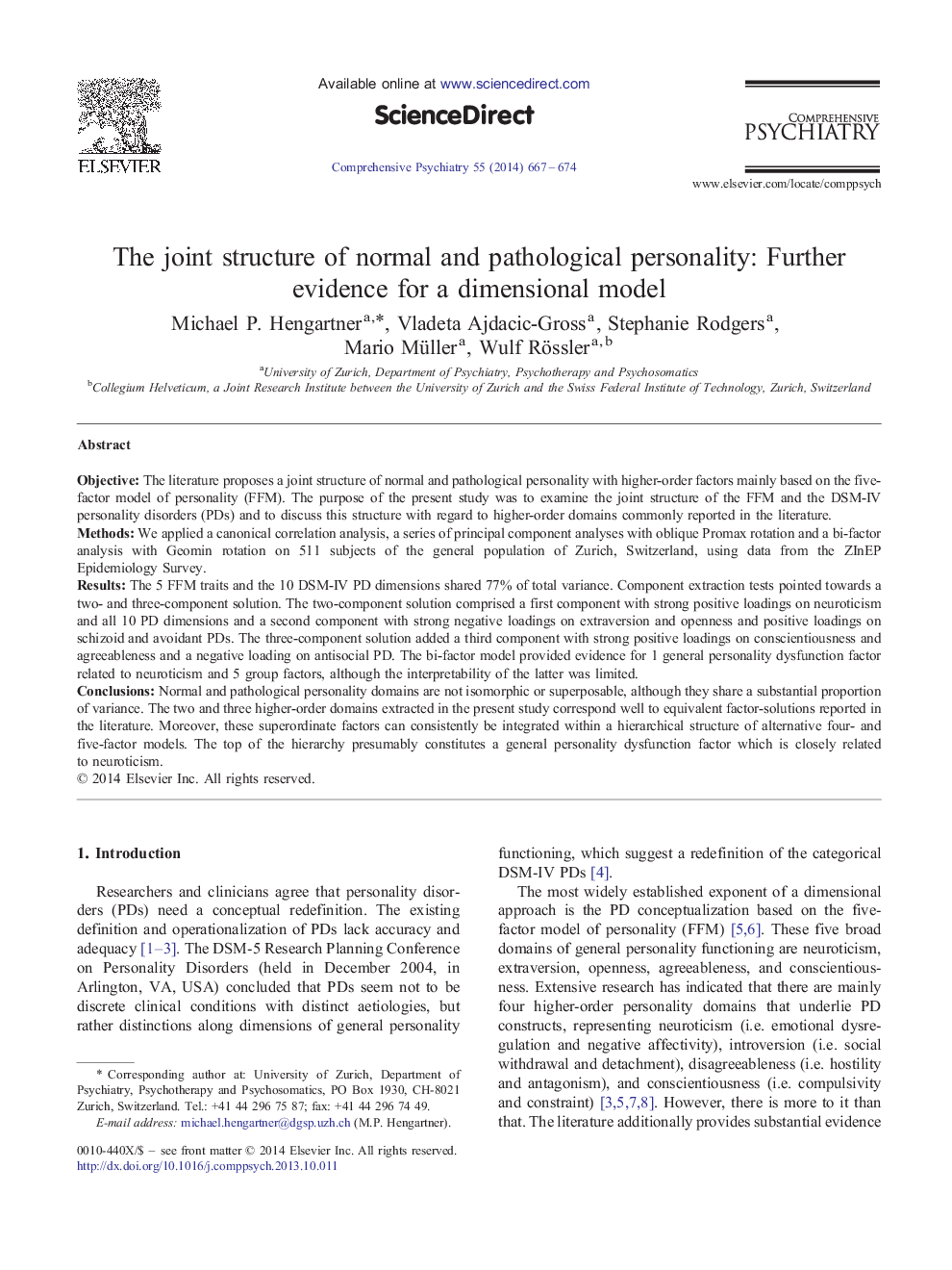| Article ID | Journal | Published Year | Pages | File Type |
|---|---|---|---|---|
| 316414 | Comprehensive Psychiatry | 2014 | 8 Pages |
ObjectiveThe literature proposes a joint structure of normal and pathological personality with higher-order factors mainly based on the five-factor model of personality (FFM). The purpose of the present study was to examine the joint structure of the FFM and the DSM-IV personality disorders (PDs) and to discuss this structure with regard to higher-order domains commonly reported in the literature.MethodsWe applied a canonical correlation analysis, a series of principal component analyses with oblique Promax rotation and a bi-factor analysis with Geomin rotation on 511 subjects of the general population of Zurich, Switzerland, using data from the ZInEP Epidemiology Survey.ResultsThe 5 FFM traits and the 10 DSM-IV PD dimensions shared 77% of total variance. Component extraction tests pointed towards a two- and three-component solution. The two-component solution comprised a first component with strong positive loadings on neuroticism and all 10 PD dimensions and a second component with strong negative loadings on extraversion and openness and positive loadings on schizoid and avoidant PDs. The three-component solution added a third component with strong positive loadings on conscientiousness and agreeableness and a negative loading on antisocial PD. The bi-factor model provided evidence for 1 general personality dysfunction factor related to neuroticism and 5 group factors, although the interpretability of the latter was limited.ConclusionsNormal and pathological personality domains are not isomorphic or superposable, although they share a substantial proportion of variance. The two and three higher-order domains extracted in the present study correspond well to equivalent factor-solutions reported in the literature. Moreover, these superordinate factors can consistently be integrated within a hierarchical structure of alternative four- and five-factor models. The top of the hierarchy presumably constitutes a general personality dysfunction factor which is closely related to neuroticism.
